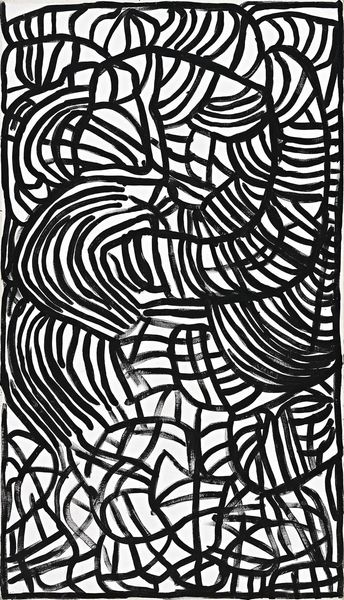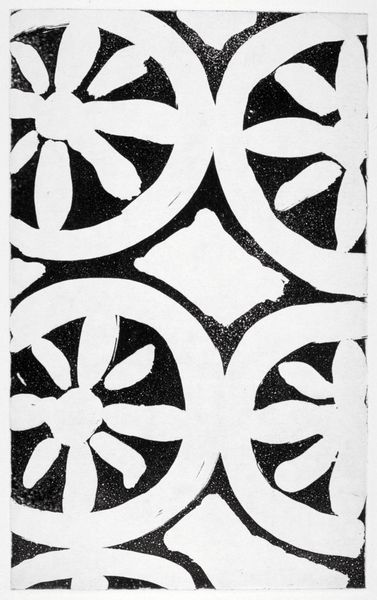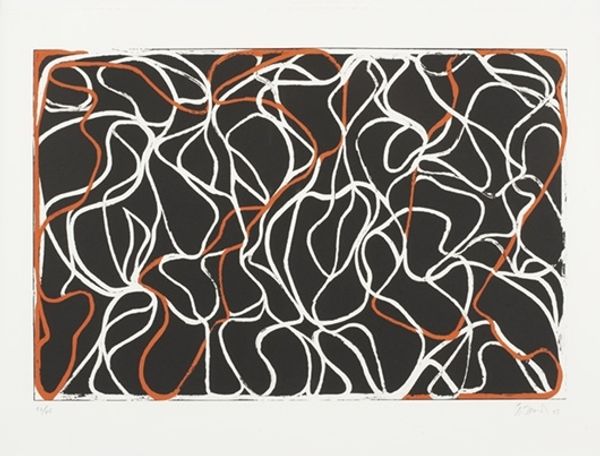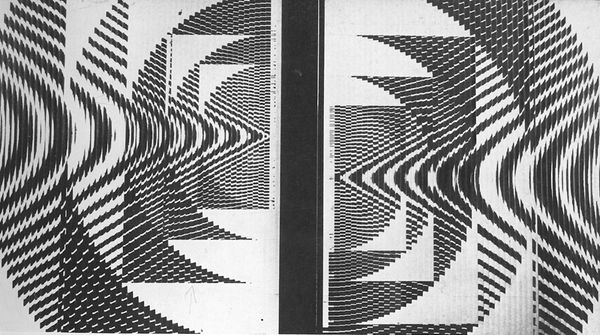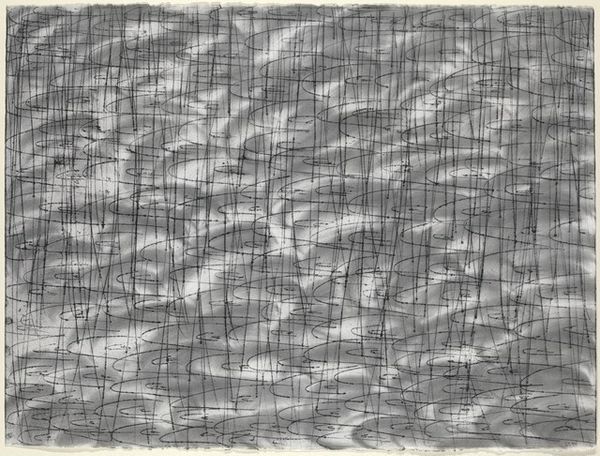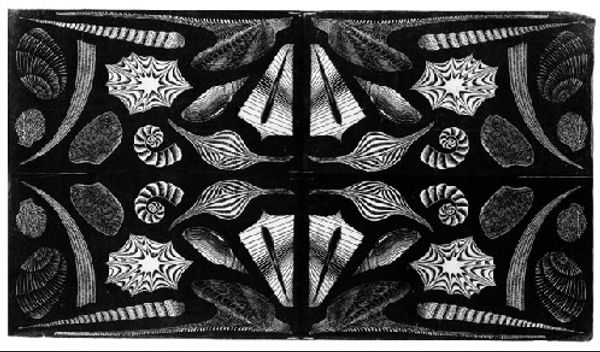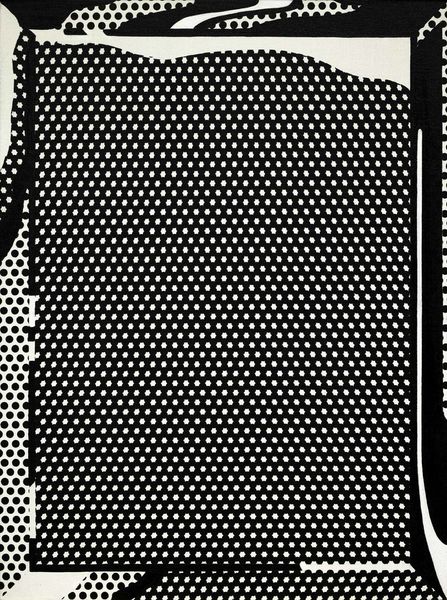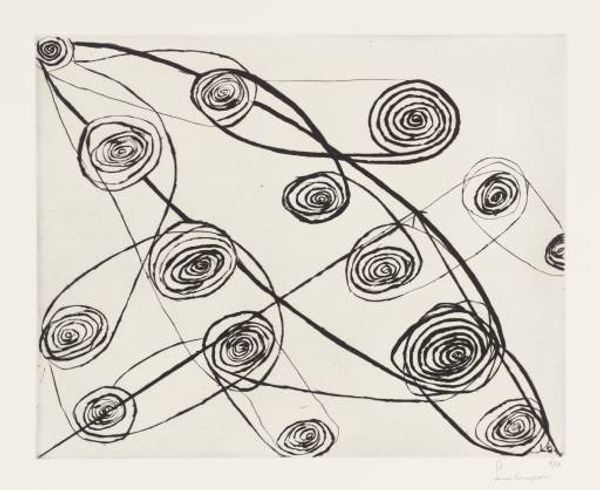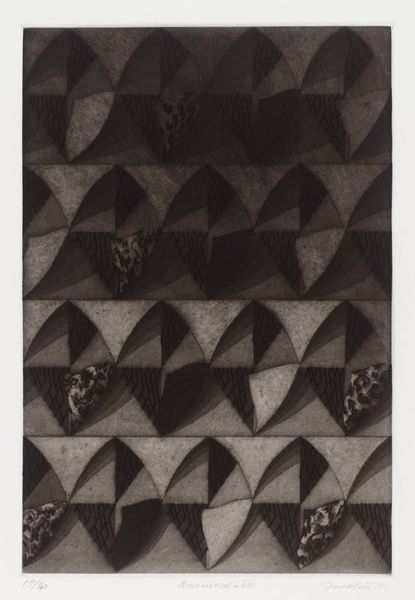
textile
#
rippled sketch texture
#
animal
#
tactile
#
textured surface
#
detailed texture
#
pattern
#
bird
#
textile
#
crosshatching
#
text
#
spiraling
#
repetition of black colour
#
embossed
#
carved
#
scratchy texture
Copyright: M.C. Escher,Fair Use
Editor: Here we have an excerpt from M.C. Escher’s “Metamorphosis III” from 1968. It’s this fascinating tessellation showing birds transforming into fish, then into ships. I’m immediately struck by how intricate the whole thing is, this chain reaction of forms. What can you tell me about it? Curator: Consider the industrial processes required for a large-scale print like this in 1968. Think about the labor involved in each stage, from the initial wood engraving – or possibly a lithograph stone – to the printing and distribution of the final work. And what type of paper was he printing on, how does it add to the affect of the piece? These works weren't unique precious commodities from the beginning. They were designed for relatively wide distribution and consumption. Escher democratizes art making by bringing mass production techniques to the creation of complex abstract works. Editor: That’s a great point. The mass-produced nature contrasts sharply with the almost obsessive detail in the design. How did he manage such complexity across a work intended for such relatively widespread circulation? Curator: He embraces it. Escher meticulously planned his tessellations using mathematical principles, essentially exploiting industrial reproducibility to bring mathematical ideas to the masses. What impact did that have? Editor: It suggests that he saw no contradiction between artistic expression and mechanical production. Instead, he used the materials and methods available to him to reach a wider audience. So it wasn’t about the preciousness of the unique object but more about the accessibility of the idea. Curator: Precisely! And how does thinking about its means of production alter how you view it now? Editor: It makes me appreciate the intention behind it so much more. It's less about individual genius and more about creative labor making a visually interesting statement about transformation available to all.
Comments
No comments
Be the first to comment and join the conversation on the ultimate creative platform.

